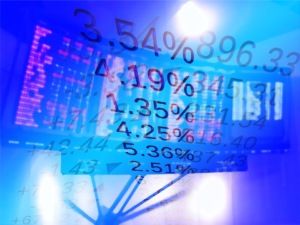Opinion
Danish Capital in 2019: Trumpeting up the Dow Jones
Neil Smith
This article is more than 6 years old.

The bold and the pitiful: Making sense of Trump’s first two years (photo: Pixabay)
After a spectacularly successful 2017, the Dow Jones had a difficult 2018, ending with the worst December performance since the Great Depression. This turnaround has gathered a lot of attention, but what is the reason behind it?
Brexit, bumps, Beijing
Firstly, there are some domestic macroeconomic issues. The current American upswing has lasted for a decade, making it unusually lengthy already. When the four recent rate increases from the Federal Reserve are factored in, there is genuine concern about the future of the US economy – particularly whether it can transition from a prolonged period of low interest rates.
Added to this, there is concern about economic performances outside the US. Of the major European economies, the UK is moving sideways thanks to uncertainty over Brexit; Germany has hit a bump; and Italy continues to stagnate, with long-term concerns about competitiveness, and short-term ones about political instability.
The major worry, though, is China – partly as many view previous growth rates as unsustainable, and partly due to worries that a Chinese-US trade war will prove problematic for both countries.
Trump’s ups and downs
Herein lies a much larger point: that markets have not been effective at factoring in the medium to long-term risk posed by the unprecedentedly erratic Trump administration.
Delighted by talk (and action) of tax cuts and deregulation, the Dow soared in 2017, increasing by 25 percent. This was the financial upside of President Trump’s mercurial, transactional approach. Yet it was clear, even at the time, that this approach had significant downsides.
Trade wars launched by presidential decree over Twitter, along with presidential criticism of Amazon, seemingly prompted by a personal dislike of the CEO, hardly provide a stable long-term business environment.
Taken as a whole
These concerns moved front and centre in 2018 as the president openly mocked the Federal Reserve chair (amongst others).
A more nuanced approach from investors at the start would have factored these issues in earlier, leading to a more modest 2017 increase and, consequently, a shallower fall-off.
Because of this link, Trump’s first two years need to be considered together: an overall increase of 18 percent over that period gives a more realistic picture of the health of the leading stock index.

About
Neil Smith
Neil is a Scottish-educated lawyer with 15 years’ experience in corporate structuring and general commercial matters. Based in Copenhagen, he primarily advises on international deals. Out of the office his interests include sport and politics. His column explores topical international financial and economic issues from a Danish perspective.










































